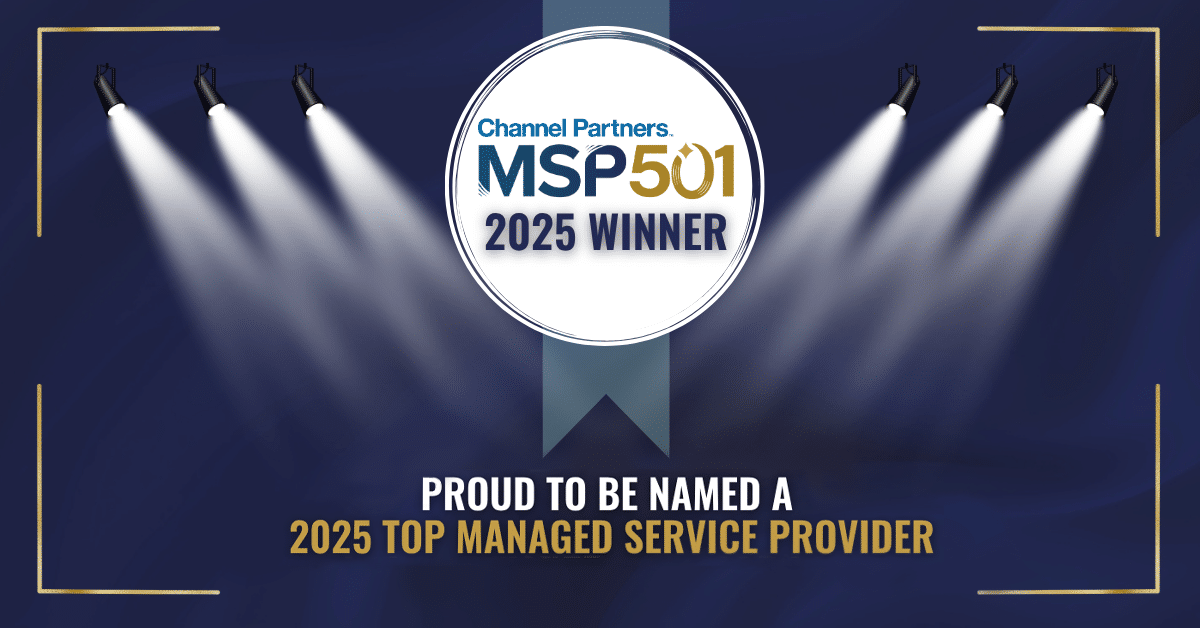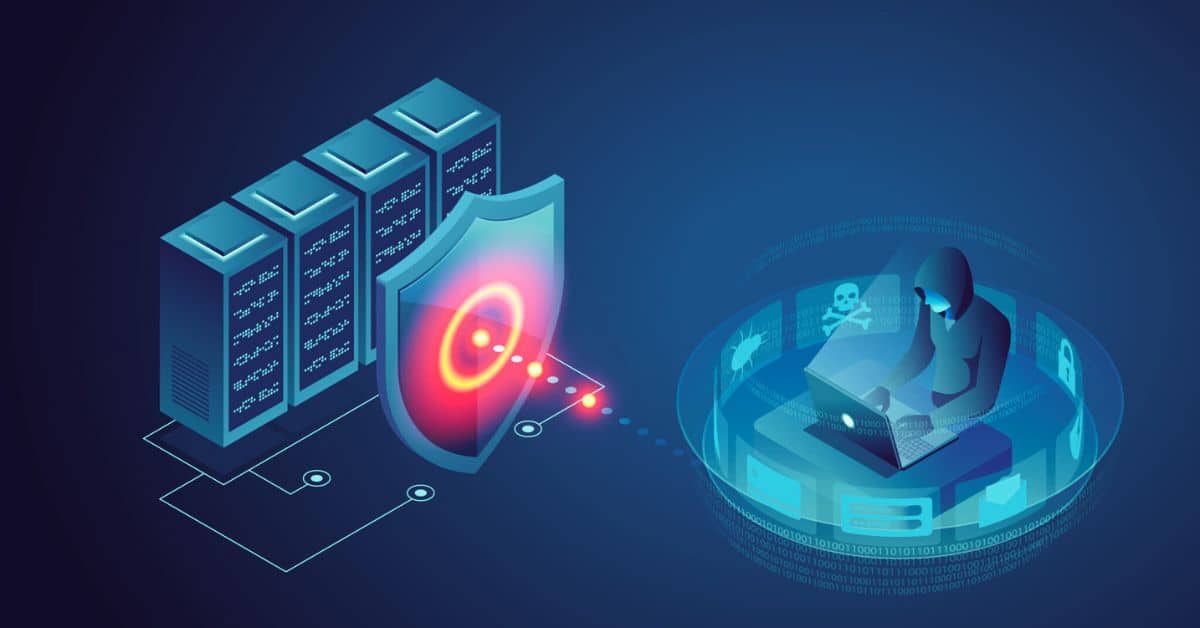Your small to mid-sized business faces many challenges – from unfulfilled security initiatives to balancing technology priorities in uncertain economies. If you have internal IT staff (and don’t need fully managed IT services), you can cut costs and bolster your technology initiatives with co-managed IT services.
🎧 Listen now as our cofounders discuss IT strategies that help SMBs lead with confidence.
Table of Contents
Benefits of Co-managed IT Support
Not only will co-managed IT reduce costs (more on that later) but there are several other ways it can boost your IT strategy:
- Overworked Staff: Technology managers are often juggling a myriad of tasks. The right MSP can help your staff focus on core strategies during seasonal peaks, digital transformation, or through fast business growth.

Is your IT department overwhelmed? Discover if outside support can reduce burnout and boost efficiency with our free questionnaire.
- Robust Security: Every organization needs cybersecurity tools and strategies. There are ransomware attacks happening every 11 seconds, and that’s one threat! To make matters worse, 60% of SMBs never recover from a data breach. The downside, of course, is most SMBs don’t have the resources to invest in enterprise-level protection. Partnering with an MSP to mitigate those risks is priceless in securing the future of your organization.
- New Projects: A co-managed IT solution can help you tackle large projects with the resources necessary through the lifecycle.
- Expertise gaps: From compliance to strategic business alignment, managed service providers can provide the expert consulting you need to fill gaps your internal team possesses.
A Co-managed IT Misconception
A common misconception is that managed services providers (MSPs) who offer co-managed support replace the internal IT staff and/or take over the IT process. A reputable MSP’s objective is to complement the internal IT staff – not replace them.
A co-managed IT service provider aims to provide a collaborative environment so they can help technology managers (e.g., CIO, vCIO, vCISO, IT Operations, etc.) in carrying out day-to-day business tasks.
Technology managers will find that the right MSP will augment their team in ways that allow them to focus on core business initiatives.
The right MSP partner will help your organization...
- Increase efficiency
- Fill important security gaps
- Reduce IT costs
- Enhance internal training
- Manage help desk responsibilities
5 Ways Co-managed IT Support Reduces Costs
Deploying managed services will help reduce IT cost by 25-45% and increase operational efficiency by 45-65%. Additionally, Intelligent Technical Solutions reports 25% of organizations experienced downtime costs of approximately $301k-$400k per hour.

That makes employing co-managed services the perfect solution for technology managers who are overworked and on a limited budget. Sharing the responsibility of the organization’s infrastructure helps you:
1. Reduce Overhead Costs
Scaling up can be a big issue in IT. Many SMBs face staff challenges, such as:
- Minimal time to recruit, hire, and train
- High IT salaries
- Low retention rates
By working with an MSP, you can augment your internal team with experts for a fraction of the in-house cost to hire new IT staff. Co-managed services allow you to keep the resources you have and supplement with services to fill gaps and relieve stress from your team.
Unlock the secrets to successfully hiring IT professionals for your small business. Quickly navigate the challenges of identifying the right candidates to support and grow your business effectively.
2. Gain Enhanced Tools & Resources
Additionally, you can enhance your IT with enterprise-level tools for a fraction of the cost. MSPs can offer this to you with reduced pricing because the cost is shared among clients.
Teal experts recommend you work with an MSP who supplies general IT support and are managed security services providers.

Learn the financial impact of cyber threats on your business’s data. Plus, unlock the financial implications of in-house vs. outsourced cybersecurity.
3. Increase IT Value
You can partner with an MSP that offers 24/7 support – ensuring you have the maximum system uptime, faster ticket resolution, and strengthened cybersecurity.
Co-managed IT providers also keep pace with the latest technology trends. This allows your business to stay competitive by leveraging their expert insights to enhance your market position.
4. Maintain Proactive Maintenance
Technology managers need to focus their energy on core business strategies; however, downtime prevention is equally important.
A co-managed solution can take care of day-to-day IT operations such as:
- Implementing timely upgrades
- Security updates and patches
- System monitoring to ensure that equipment performs optimally
Proactive and preventative maintenance from your co-managed provider prevents downtime and revenue loss. This allows internal staff to focus on critical business initiatives and reduces their workload – increasing productivity and boosting morale.
5. Fixed Fees
Reputable outsourced IT service providers will provide you with a contract detailing fixed monthly fees – so you’ll always know what to expect.

How to Choose the Right Co-managed IT Service Provider
Choosing the right co-managed IT service provider is crucial for your business’s success.
A poor partnership can lead to inefficiencies, misalignment with your strategic goals, and even increased risks. That’s why conducting thorough research and due diligence before hiring an MSP is essential.
Not all service providers are created equal. Even if a provider offers an extensive range of services, it doesn’t guarantee they’ll align with your company’s vision or meet your strategic needs. In fact, cutting costs by opting for lower-priced services can often backfire, leaving critical gaps in support.
Investing in premium services may involve a higher upfront cost, but it guarantees that your specific needs are thoroughly met – positioning your business for long-term success. Plus, by preventing costly issues and inefficiencies down the line often results in significant savings over time.
Before Researching MSPs
It’s crucial that you assess your internal resources and responsibilities before looking for a complementary MSP to provide co-managed IT support. This will inform you of the tasks and responsibilities you want to outsource and help your organization reach its goals.
Choosing the right co-managed IT partner is crucial to the success and security of your business. Don’t let common red flags go unnoticed!
When Researching MSPs
As you begin your research, look for these key deciding factors:
- Great Service: Pay attention to how they interact with you and your team. Ensure they are interested in your company, your goals, and offer clear solutions. Excellent customer service is the hallmark of a great IT MSP.
- References/Reviews: Ask for references and/or client reviews. Find out what other business leaders liked and didn’t like about the company.
- Experience: Choose an MSP that has experience working with your industry, size, and scope. They need to understand how to streamline processes, meet compliance requirements, and manage operations.
- Services Offered: Ensure they offer the services and solutions you need to meet your goals.
- Outcome Driven: Ensure the MSP is outcome driven to help you grow your business. Each company has nuanced requirements that need to be met. Invest in a company that will give you the personalized approach you deserve.
- Scalability: IT needs can change – as your business grows or due to seasonality. Choose a company that can scale up or down when necessary to prevent paying for services you don’t need.
- Pricing: Get quotes from several companies. Compare the pricing structures and what services are offered.
Teal provides co-managed IT to small businesses and we tell our clients, “We measure our success by yours.”
A good MSP is genuinely interested in your goals and helps to provide solutions to reach them. They also are transparent and communicate when they know they are not a good fit for your company.
MSP Vetting Checklist
If you’re considering co-managed IT services, check out our MSP Vetting Checklist. It highlights critical items to look for when evaluating MSPs. It covers everything from first interactions to transitioning to your co-managed IT service provider.

Use this checklist to make choosing the right managed service provider for your organization easy and stress-free.
Get the Most from Your Outsourced IT Service Partner
CIOs, IT directors, and other professionals can maximize their IT resources by fostering a collaborative co-managed IT partnership. By effectively leveraging the expertise of IT service providers, organizations can drive operational efficiency, strengthen cybersecurity, and achieve key strategic goals.
Check out this article for expert insights into transitioning to an MSP – whether it’s your first one or not.
Close Skill Gaps & Get More Done Today
Teal offers responsive and secure managed IT services to SMBs nationally, with local headquarters based in:
If you’re interested in learning about our premier IT consulting, contact a Teal business technology advisor today!














